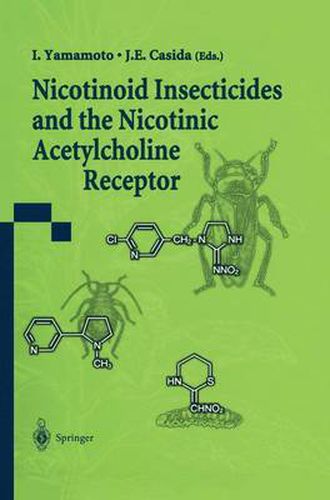Readings Newsletter
Become a Readings Member to make your shopping experience even easier.
Sign in or sign up for free!
You’re not far away from qualifying for FREE standard shipping within Australia
You’ve qualified for FREE standard shipping within Australia
The cart is loading…






This title is printed to order. This book may have been self-published. If so, we cannot guarantee the quality of the content. In the main most books will have gone through the editing process however some may not. We therefore suggest that you be aware of this before ordering this book. If in doubt check either the author or publisher’s details as we are unable to accept any returns unless they are faulty. Please contact us if you have any questions.
Insect pest control has continuously evolved from inorganics to botanicals, to chlo- rinated hydrocarbons, to organophosphorus compounds and methylcarbamates, then synthetic pyrethroids and most recently synthetic nicotinoids as the major classes. These insecticides allowed high standards of crop protection at minimal cost. A limitation in each new class of compounds is the selection of resistant strains and ultimate control failures and this serves as a driving force to discover and develop replacement compounds to circumvent resistance and overcome problem areas. The nicotinoids now play a critical role in meeting this need. Three generations of chemicals are involved in the history of nicotinoid insecti- cides. The first generation was the botanical nicotine used for at least three centuries to control sucking insect pests but largely replaced in the 1940s and 1950s by the more effective organophosphorus compounds and methylcarbamates, some with systemic properties. Synthesis programs based on nicotine as a prototype did not yield compounds that could compete with other synthetic insecticides. The second generation was the nitromethylene type such as nithiazine, discovered by Shell sci- entists in a screening/optimization program. The nitromethylenes had the potency, selectivity, and systemic properties but lacked the field effectiveness largely because of photolability (so close yet so far from a major commercial product). The third generation required a series of advances made by Bayer researchers starting from nithiazine as the model and enhancing its photostability and potency with a nitroimine and chloropyridyl moiety, respectively, to give imidacloprid, the subject of much of this monograph.
$9.00 standard shipping within Australia
FREE standard shipping within Australia for orders over $100.00
Express & International shipping calculated at checkout
This title is printed to order. This book may have been self-published. If so, we cannot guarantee the quality of the content. In the main most books will have gone through the editing process however some may not. We therefore suggest that you be aware of this before ordering this book. If in doubt check either the author or publisher’s details as we are unable to accept any returns unless they are faulty. Please contact us if you have any questions.
Insect pest control has continuously evolved from inorganics to botanicals, to chlo- rinated hydrocarbons, to organophosphorus compounds and methylcarbamates, then synthetic pyrethroids and most recently synthetic nicotinoids as the major classes. These insecticides allowed high standards of crop protection at minimal cost. A limitation in each new class of compounds is the selection of resistant strains and ultimate control failures and this serves as a driving force to discover and develop replacement compounds to circumvent resistance and overcome problem areas. The nicotinoids now play a critical role in meeting this need. Three generations of chemicals are involved in the history of nicotinoid insecti- cides. The first generation was the botanical nicotine used for at least three centuries to control sucking insect pests but largely replaced in the 1940s and 1950s by the more effective organophosphorus compounds and methylcarbamates, some with systemic properties. Synthesis programs based on nicotine as a prototype did not yield compounds that could compete with other synthetic insecticides. The second generation was the nitromethylene type such as nithiazine, discovered by Shell sci- entists in a screening/optimization program. The nitromethylenes had the potency, selectivity, and systemic properties but lacked the field effectiveness largely because of photolability (so close yet so far from a major commercial product). The third generation required a series of advances made by Bayer researchers starting from nithiazine as the model and enhancing its photostability and potency with a nitroimine and chloropyridyl moiety, respectively, to give imidacloprid, the subject of much of this monograph.